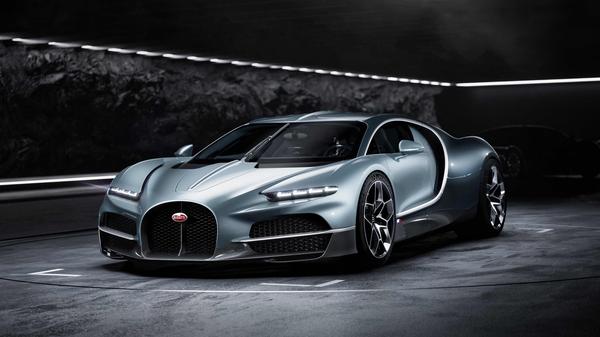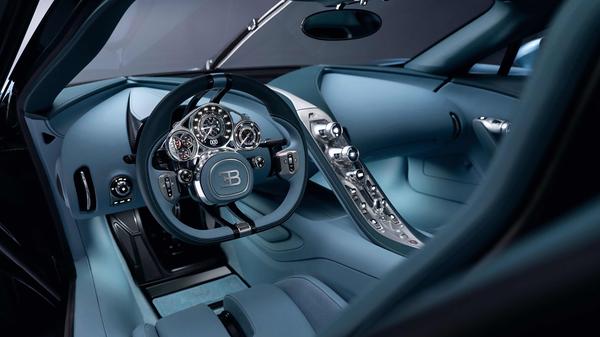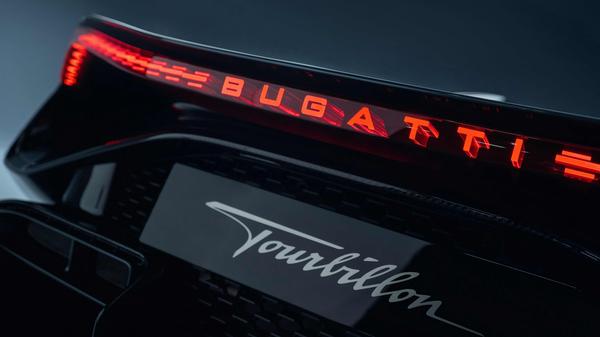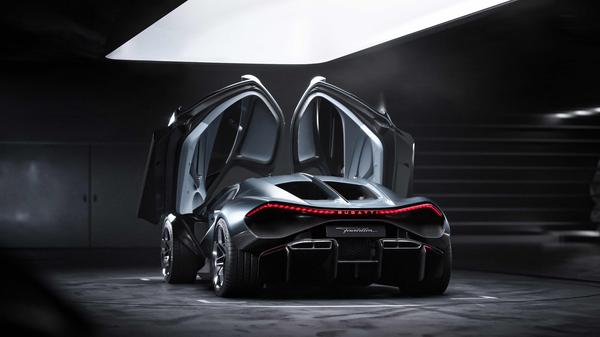News
Coming Soon | Incredible new Bugatti Tourbillon - prices, specs and release info
Bugatti replaces the Chiron with the Tourbillon, a £3.2m super-hybrid with 1,800 horsepower and probably record-breaking speed


Words by: Mark Nichol
Published on 21 June 2024 | 0 min read
Well, here it is. The next (and probably last) act in Bugatti’s petrol-powered superhero story arc. This is the Bugatti Tourbillon, the successor to the Chiron, which was in turn the successor to the Veyron. Each one of them was more staggering than the last, so here we have a car with 1,800 horsepower, a top speed eclipsing 300mph and a £3,200,000 price tag. Oh, and it’s a hybrid. Of course it is.
Read on for all the details… • 1,000 horsepower 8.3-litre 16-cylinder petrol engine developed by Cosworth... • …is linked to three electric motors with 800 horsepower • Voila! 1800 horsepower – almost twice a Bugatti Veyron’s • It’ll be the most powerful production car ever made, and probably the fastest • Bugatti aiming to eclipse a 300mph top speed • 0-62mph time not confirmed, but likely two seconds flat; less than five seconds to 124mph • Eight-speed dual-clutch gearbox, four-wheel drive • 25kWh battery means a 37-mile electric-only range • “Tourbillon” name comes from an automatic mechanism in (generally) ridiculously-priced watches • 250 planned initially, costing £3,200,000 each from early 2026
Read on for all the details… • 1,000 horsepower 8.3-litre 16-cylinder petrol engine developed by Cosworth... • …is linked to three electric motors with 800 horsepower • Voila! 1800 horsepower – almost twice a Bugatti Veyron’s • It’ll be the most powerful production car ever made, and probably the fastest • Bugatti aiming to eclipse a 300mph top speed • 0-62mph time not confirmed, but likely two seconds flat; less than five seconds to 124mph • Eight-speed dual-clutch gearbox, four-wheel drive • 25kWh battery means a 37-mile electric-only range • “Tourbillon” name comes from an automatic mechanism in (generally) ridiculously-priced watches • 250 planned initially, costing £3,200,000 each from early 2026

Design and models available
Just the one, for now. This one. Much of the design is familiar at first glance – the gaping, nose-forward grille; the quad front LED headlamps; the recessed doors leading into huge air vents at the rear shoulders, sucking in air to cool the enormous engine. The Tourbillon has some notable highlights, though. Like dihedral doors that open like a butterfly’s wings – remotely, if you can’t be bothered to pull a handle. Note the dividing line that runs all across the car's centre from bonnet to tailgate, too. At the rear it forms part of the brake lights, splitting the exposed cylinder banks of the V16 engine. An illuminated 3D Bugatti badge is incorporated into the main taillight that stretches across the rear. It’s all mesmerising.
Interior and technology
Again, the basic architecture will be familiar to anyone who's followed Bugatti for the last couple of decades, with a thin and very high-set centre console housing the main controls – they’re made of machined crystal glass. You turn the car on by pulling a lever on the dashboard. The steering wheel is designed in clear homage to a Tourbillon watch mechanism – skeletal mechanical dials attached to a central fixed steering wheel boss; the steering rim moves around the boss and dials independently. If you can’t picture it, think of a 2004 Citroen C4’s steering wheel. Moving on… Everywhere you look there’s a detail to be admired. The door hinges are exposed aluminium, and the central touchscreen is hidden until you press a button, upon which it rises from the dashboard in portrait orientation then swivels to landscape. Once in place, you’ll just have to forget about the fact that it looks like an old Samsung Galaxy tablet. It probably feels better than that. (Click through the images above to see all this stuff.)
Battery, motor and range
Bugatti has used a number of outside specialists to create parts for the Tourbillon – this is not an amalgam of Volkswagen Group parts like the Veyron and Chiron were (to put it VERY simply). The engine is developed and produced by Cosworth, the brakes by Brembo, and the electrics by Rimac – Bugatti’s owner, essentially. Other manufacturers have been involved too, including for the suspension. The hybrid system combines an 8.3-litre naturally aspirated (no turbos) engine with three electric motors – two on the front axle and one at the rear. The engine itself is remarkably light. Despite having 16 cylinders and being about a metre long, it tips the scales at 252kg – about the weight of a four-cylinder diesel. The electric motors produce 800 horsepower on their own, and the 25kWh battery is good for 37-miles of electric only range. That said, Bugatti says that zero-emissions driving is very secondary in this, and that the “priorities” are “power, throttle response and torque fill.” Bonus zero-emissions driving in an extremely quick car, basically. And believe it or not, all this weighs LESS than the Chiron. The engine is a big part of that (a Chiron’s engine weighs 400kg), as well as liberal use of aluminium, titanium, carbon and 3D printing techniques throughout the body and chassis.
Price and release
Again, £3.2m. And it’ll be easy to get this thing closer to £4m with options if you’re one of the 250 lucky enough to have the means. Production starts in 2025, with first deliveries in 2026.What other cars from Bugatti are due?
Bugatti was toying with the idea of making the Chiron’s successor a pure electric car, but decided instead to pause that for this hybrid. No doubt this car’s successor will be an EV – mainly because it’ll be mandated. In the meantime, we’ll get convertible and Super Sport versions of the Tourbillon. Then a diesel crossover. Not really. Although a Bugatti SUV isn’t out of the question. Anything Ferrari can do…